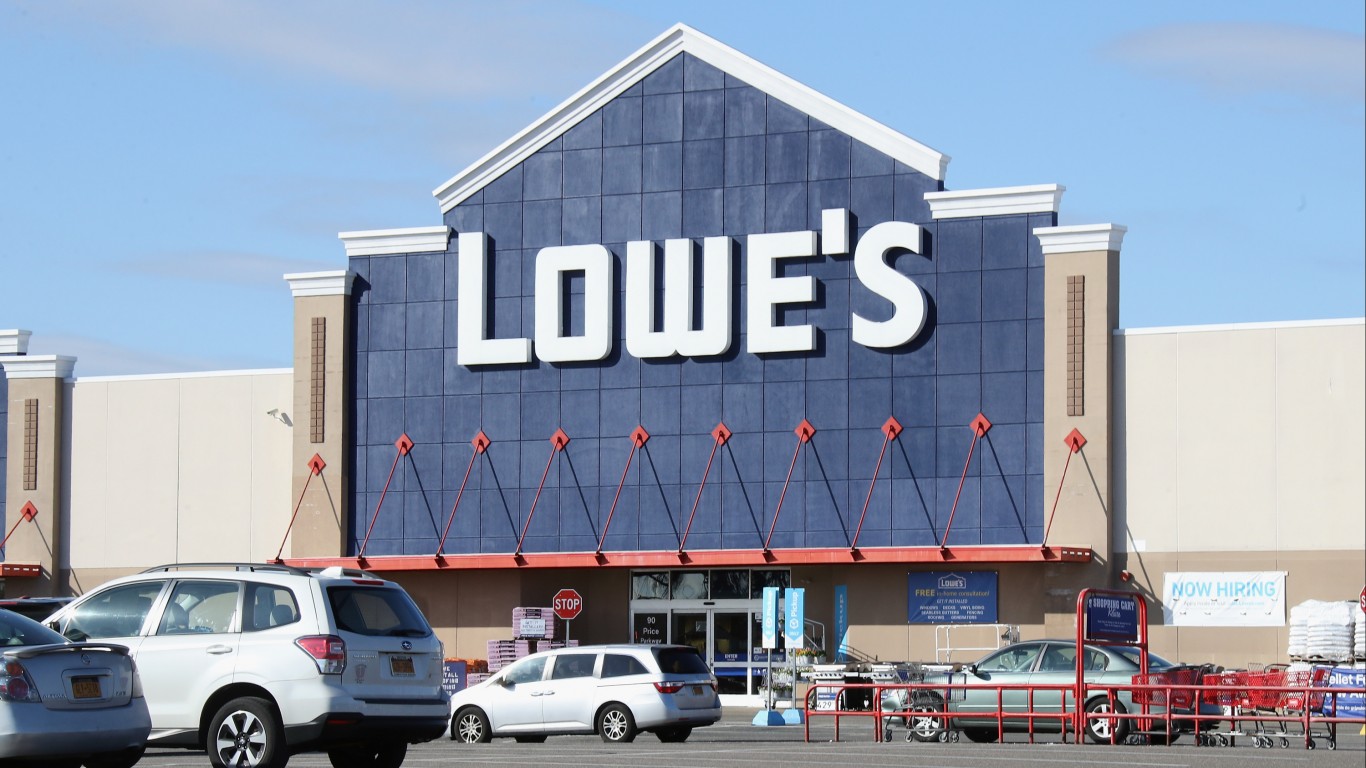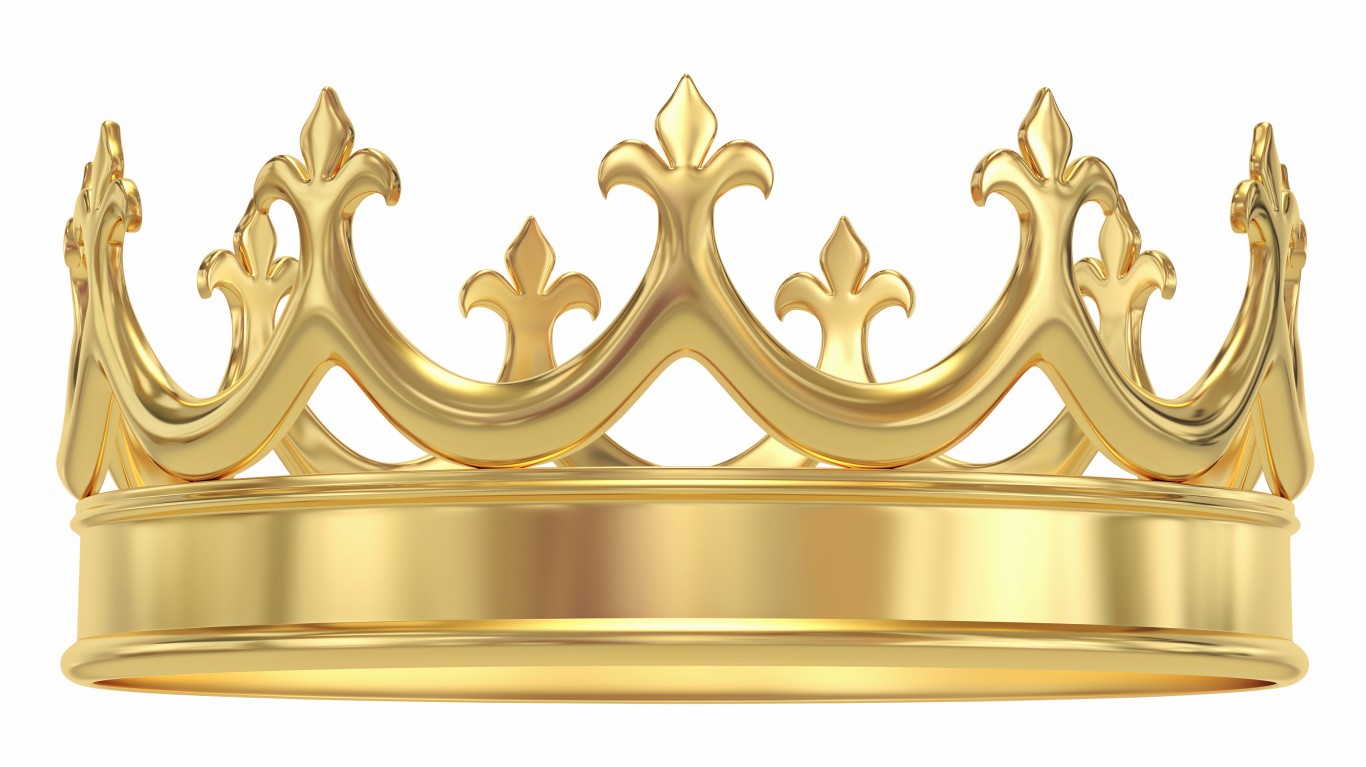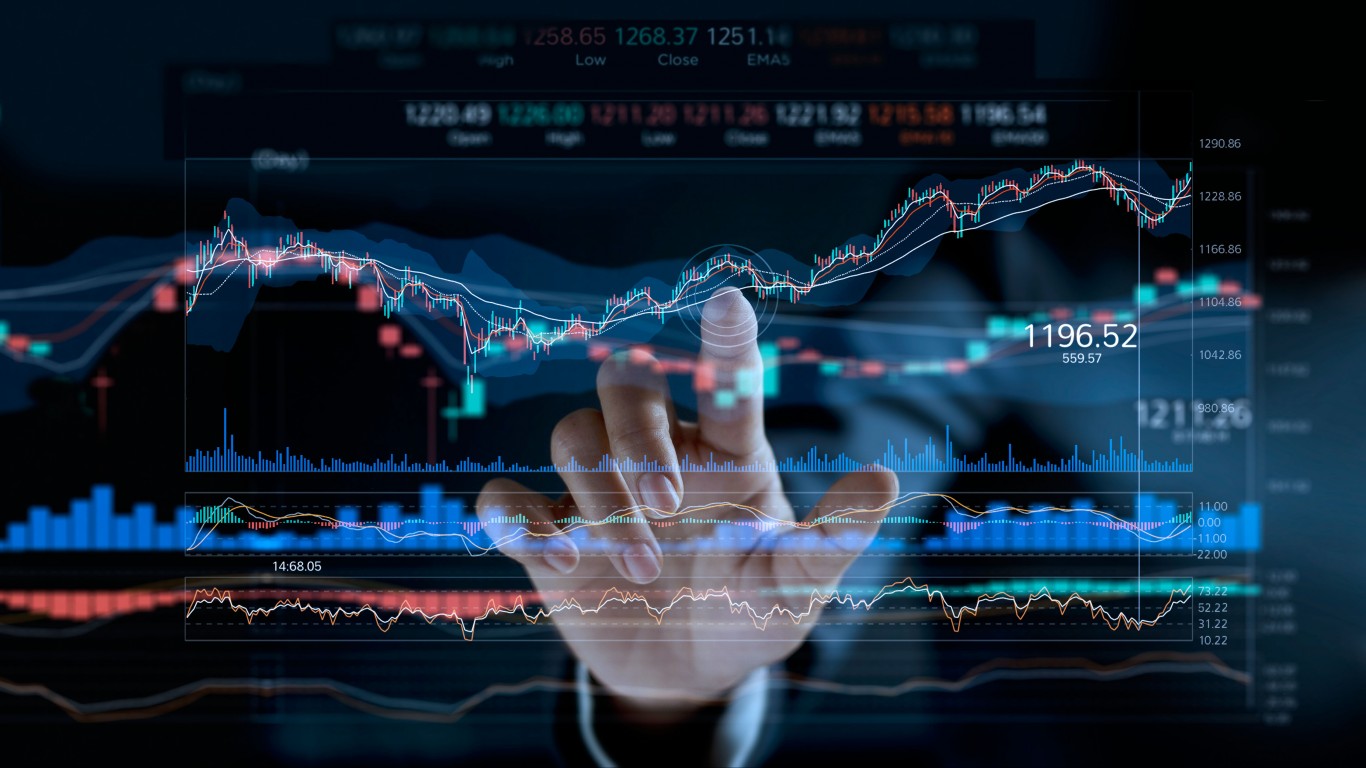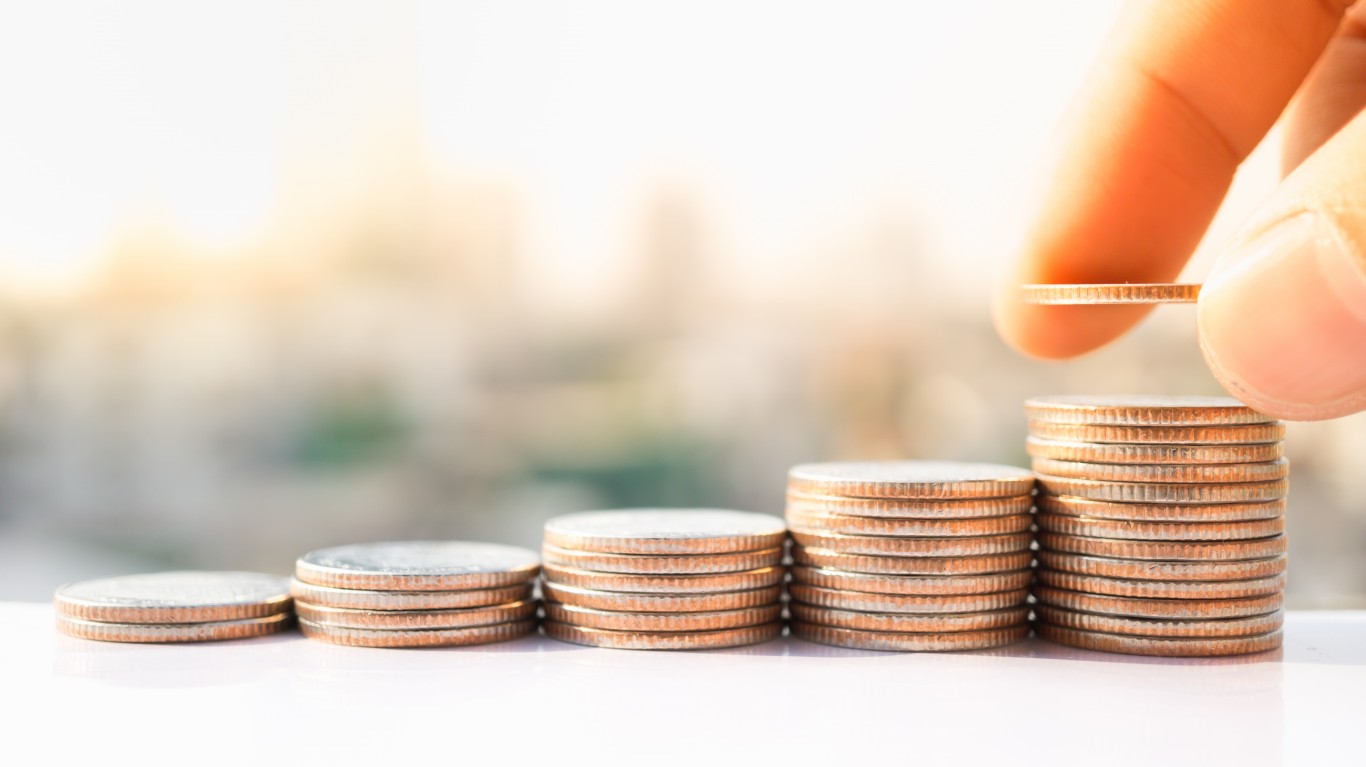
A key component of income investing is a portfolio that includes safe dividends, those that are unlikely to shrink or disappear. Recognizing when a dividend is stable and safe can be a challenge. Yet, certain metrics can offer clear signs for the investor looking to establish or shore up such a portfolio. What do these metrics tell us about the quarterly dividend at Lowe’s Companies Inc. (NYSE: LOW)?
The most recent payout from Lowe’s was $1.10 a share, and the yield is now about 2.0%. The next ex-dividend date is expected in late April. The current yield is less than the 2.4% of rival big-box home improvement retailer Home Depot Inc. (NYSE: HD). They are both lower than the industry average of about 3.6%.
Dividend Aristocrat?

One clear sign of whether a dividend is stable and safe is if the company is a Dividend Aristocrat. Those are companies in the S&P 500 that have not only paid a dividend consistently for 25 years but have increased their payouts every year as well. Lowe’s not only is a Dividend Aristocrat, but it is a Dividend King, one of those companies that has hiked its payout for at least 50 consecutive years. (See the seven highest-yielding 2024 Dividend Kings to buy and hold forever.)
Other Valuation Metrics

While being a Dividend King is a good sign, other financial metrics provide additional insight.
The dividend payout ratio indicates how much of a company’s earnings it pays out as a dividend. It is a sign of how safe a company’s dividend is and how much room it has for future growth. The higher the ratio, the greater the risk. Income investors often look for a dividend payout ratio of less than 60%. The current dividend payout ratio at Lowe’s is about 34%. That is about the same as the retail industry average and the company’s mean dividend payout ratio over the past decade.
A look at free cash flow reveals whether the company has the funds required for its payout, as well as for share repurchases or even paying down debt or making acquisitions. Income investors prefer growing free cash flows. At Lowe’s, free cash flow plunged over 41% in 2020 to nearly $2.98 billion before surging more than 214% to almost $9.5 billion in 2021 as the COVID-19 pandemic waned. The total has retreated since then and was last seen near $5.7 billion.
Return on invested capital is a measure of how well a company allocates its capital to profitable projects or investments. Again, the thing to look for is stability, specifically a double-digit ROIC over many years. Lowe’s current ROIC is about 28.4%. It has been in the double digits since 2014, peaking at more than 34%. Home Depot currently has an ROIC of almost 31%.
Operating margin is a measure of the percentage of revenue a company keeps as operating profit. Here too the preference is for a stable double-digit percentage increase. The current figure at Lowe’s is more than 9%. Other than a slump leading into the pandemic, the margin has trended upward from around 6% in 2010. Home Depot’s operating margin is higher, and it has been in double digits since 2012.
A look at sales growth offers a clue to the volatility or cyclical nature of the business. Steady, moderate growth, say 3% to 7%, is often considered ideal. Revenue at Lowe’s increased in nearly every quarter from 2010 to 2022, when it plateaued at around $96 billion. It has retreated to about $90 billion recently. Sales at Home Depot have followed a similar pattern in that time.
A company’s net debt-to-capital ratio also can signal whether a dividend may be at risk. Because too much debt can put dividends at risk in hard times, a lower ratio is considered better. A debt-to-capital ratio above 0.6 usually means that a business has significantly more debt than equity. Unfortunately, the ratio at Lowe’s has been rising in the past few years and was last seen near 1.8.
Probably the most popular valuation metric is the price-to-earnings (PE) ratio. This indicates whether a stock is expensive or cheap at its current market price, compared to the broader market or to competitors. Lowe’s trailing PE ratio of almost 16 is about the same as its forward PE, and it has been mostly between 15 and 23 since 2013. It is less than the current industry average of about 28 though. That compares with a broad historical benchmark of 15, as well as the broader market’s current 24 or so. Home Depot’s PE now is more than 22. (See which five blue chip dividend stocks make up 75% of Warren Buffett’s portfolio.)
And finally, the number of shares outstanding is worth a look. When companies buy back their shares, that number shrinks. But secondary offerings of stock and stock compensation increase that total. Investors tend to prefer a declining total, as that increases their stake over time. In 2010, almost 1.5 billion Lowe’s shares were outstanding. The total has declined every year since to about 631 million last year. The retailer set aside $15 billion for share buybacks in late 2022.
Summary

Given its status as a Dividend King, it would seem that the dividend at Lowe’s is safe. However, some metrics do bear watching.
| Dividend Aristocrat | ✔ |
| Dividend payout ratio | ✔ |
| Free cash flow | 🗙 |
| Return on invested capital | ✔ |
| Operating margin | 🗙 |
| Sales growth | 🗙 |
| Net debt-to-capital ratio | 🗙 |
| PE ratio | ✔ |
| Shares outstanding | ✔ |
While Lowe’s dividend payout ratio seems reasonable. The question is whether the unreliable free cash flow and stalled revenue growth can continue to sustain it. Also, could debt become an issue if, for example, the economy falls into recession? It would be a shame, for income investors especially, if Lowe’s was forced to give up its status as a Dividend King.
It’s Your Money, Your Future—Own It (sponsor)
Are you ahead, or behind on retirement? For families with more than $500,000 saved for retirement, finding a financial advisor who puts your interest first can be the difference, and today it’s easier than ever. SmartAsset’s free tool matches you with up to three fiduciary financial advisors who serve your area in minutes. Each advisor has been carefully vetted and must act in your best interests. Start your search now.
If you’ve saved and built a substantial nest egg for you and your family, don’t delay; get started right here and help your retirement dreams become a retirement reality.
Thank you for reading! Have some feedback for us?
Contact the 24/7 Wall St. editorial team.





